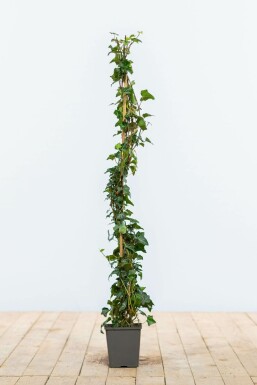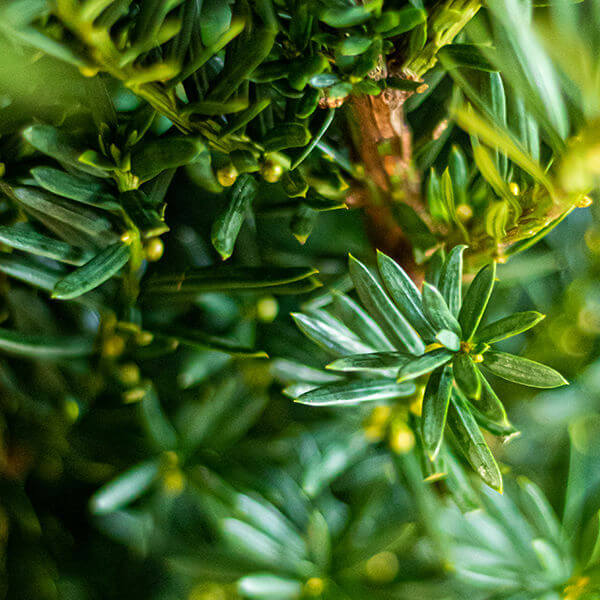Hedging Plants For Attracting Birds
Hedging Plants For Attracting Birds
Blog Article
Low-growing Hedging Plants For Borders
Boost your garden's allure with lush hedge varieties such as Yew (Taxus), Thuja, Laurel, Photinia, and Bamboo, celebrated for their structural integrity and environmental advantages.
Yew and Thuja provide evergreen coverage and winter season strength, while Laurel provides quick development and broad, fragrant leaves.
Photinia includes seasonal beauty with its lively red foliage, and Bamboo provides a low-maintenance, peaceful ambiance.
These hedges enhance air quality, reduce sound, and produce tranquil, private spaces.
Appropriate planting, spacing, and upkeep ensure vigorous development and ecological harmony.
Check out how these lavish varieties can raise your garden's appeal and well-being.
Secret Takeaways
Change Your Garden With Lush Hedge Ranges
- Select Yew for its thick, evergreen development and unrivaled durability.
- Go with Laurel for its quick development and broad leaves, ensuring quick personal privacy.
- Pick Photinia for its lively seasonal foliage, which turns a striking dark red.
- Make use of Bamboo for a low-maintenance, winter-hardy hedge with aesthetic appeal.
- Space plants 2-3 per meter and prune regularly for ideal growth and health.
Popular Hedge Plants
When transforming a garden with rich hedge ranges, it's necessary to think about popular hedge plants such as Yew, Thuja, Laurel, and Photinia due to their unique characteristics and benefits.
Yew (Taxus) is highly esteemed for its longevity and dense, green growth, making it a prime choice for withstanding landscapes.
Thuja is kept in mind for its evergreen foliage and robust winter season strength.
Photinia includes seasonal vibrancy with red leaves that darken gradually, producing vibrant visual appeal.
Laurel provides fast growth and fragrant, broad leaves, ideal for fast privacy.
Furthermore, Bamboo is an outstanding choice for atmosphere, using a low-maintenance, winter-hardy alternative that improves the garden's aesthetic with its stylish, swaying canes.
These selections deal with a range of horticultural needs and preferences.
Advantages of Garden Hedges
Garden hedges provide a wide range of benefits, making them an important addition to any landscape. These natural barriers are economical to execute and provide substantial wind security, enhancing air flow and adding to sound reduction. The thick foliage of hedges like Thuja and Beech guarantees privacy by blocking exposure, creating a secluded and peaceful environment.
Hedges also play a crucial function in microclimate regulation, supplying a steady environment that fosters plant development and reduces temperature level changes. Their intricate leaf structures filter contaminants, improving air quality and adding to a healthier garden environment.
Furthermore, hedges stand out in noise decrease, absorbing and deflecting acoustic waves to lower ambient noise levels. This double performance of providing both acoustic and visual privacy boosts the general tranquility and visual appeal of any garden.
Planting and Upkeep Tips
For an effective hedge, precise preparation of the planting area is important. Make sure the soil has appropriate pH and drainage to support strong root advancement.
Space the plants appropriately for the chosen types. Water the hedge often throughout its initial development stage, adjusting as required with seasonal changes.
Implement a organized pest control and disease avoidance strategy, using natural or chemical treatments when necessary. Routinely check for aphids, mites, and fungal infections.
Apply mulch to retain moisture and reduce weeds. Seasonal pruning promotes thick development and air circulation, important for plant health.
Following these guidelines will help you cultivate a dynamic, properly maintained hedge that boosts the appeal of your garden.
Spacing and Cutting Guidelines
Spacing and Trimming Standards
Correct spacing and cutting are crucial for cultivating healthy, visually appealing hedges. Adequate spacing ensures each plant receives adequate nutrients, light, and airflow.
Follow these guidelines for ideal hedge maintenance:
- Spacing: Position hedge plants 2-3 plants per meter to encourage robust growth.
- Pruning Techniques: Regular pruning is essential for maintaining desired hedge height and shape. Trim new growth in summer and cut down older wood throughout winter season.
- Seasonal Care: Adjust trimming methods and schedules according to seasonal requirements to ensure plant health.
- Hedge Height: Regularly monitor and cut to keep the preferred hedge height and accomplish uniform aesthetics.
Sticking to these steps will guarantee your hedge grows, improving both the appeal and performance of your garden.
Picking the Right Hedge
Picking the Right Hedge
Choosing the appropriate hedge includes assessing factors such as mature height, foliage density, and ecological strength. Effective hedge plant selection requires understanding each types' development qualities and site-specific adaptability.
For instance, Yew (Taxus) offers exceptional longevity and dense development, while Thuja is notable for its winter season resilience. Additionally, thinking about maintenance requirements is vital; fast-growing species like Laurel or Privet need regular cutting, whereas low-maintenance choices like Bamboo or Ivy may be more suitable for those looking for minimal maintenance.
Environmental aspects such as soil type, light accessibility, and wetness conditions ought to likewise guide the choice procedure. This careful approach ensures the selected hedges will thrive, offering both visual and functional advantages to the garden landscape.
Shipment and Planting Guidance
To guarantee your hedge plants thrive, they ought to be provided by specialized couriers and planted without delay upon arrival.
Follow these necessary actions for successful planting:
- Soil Preparation: Improve the soil with raw material to improve drainage and nutrient content.
- Planting Depth: Develop a trench two times the width and equal to the depth of the root ball.
- Watering Techniques: Water thoroughly after planting, keeping the soil consistently moist but not saturated.
- Mulching: Apply a layer of mulch to retain moisture and reduce weeds.
Consumer Support and Service
Given the essential function of prompt help in horticultural pursuits, our consumer support team is available six days a week through telephone, e-mail, and social networks to use skilled advice and swiftly deal with any concerns. Their commitment to quick response times ensures client complete satisfaction by fixing inquiries related to plant health, ideal planting techniques, and maintenance schedules.

Action Time
-------------------
Telephone
6 days a week
This extensive assistance system, enhanced by a stellar 9.3/ 10 customer score, highlights our dedication to boosting the gardening experience for every single customer.
Frequently Asked Questions
How Long Does It Take for Hedge Plants to Establish?
Hedge plants typically require one to three years to become fully developed, with the specific period differing by types and growing conditions.
Reliable care throughout this important duration is necessary for robust development. Constant watering, alert weed control, and proper fertilizer application are critical in promoting strong root advancement.
For example, fast-growing species like Laurel may establish faster, while slower-growing varieties such as Yew may take longer. Thorough upkeep accelerates the establishment process, leading to thick and healthy hedges.
What Are the Finest Hedge Plants for Personal Privacy?
The question of the finest hedge plants for privacy involves examining evergreen and deciduous alternatives.
Evergreen hedges like Thuja, Laurel, and Cypress offer year-round protection, making sure continuous personal privacy.
On the other hand, deciduous hedges such as Beech offer seasonal privacy, shedding leaves in cooler months.
Key maintenance pointers for personal privacy hedges consist of regular trimming, fertilizing in spring, and appropriate spacing-- usually 2 to 3 plants per meter.
Furthermore, constant watering and persistent weed removal are crucial for promoting healthy, thick growth.
Can Hedge Plants Attract Wildlife to My Garden?
Yes, hedge plants can bring in wildlife to your garden by offering essential advantages like shelter, food, and nesting sites, therefore improving regional biodiversity. For instance, yew, holly, and laurel are excellent for bring in birds, while ivy supports a variety of pests.
However, it is essential to note that there are some downsides, such as increased upkeep to handle insects and routine upkeep. Thoroughly picking and preserving hedge ranges can help balance these advantages and drawbacks, ultimately cultivating a sustainable and dynamic environment in your garden.
Exist Any Flowering Hedge Plants Available?
Yes, there are flowering hedge plants offered that can boost the charm of your garden.
For instance, Elaeagnus, also called Olive Willow, produces aromatic white flowers in the fall, including a touch of sophistication.
Photinia, another popular choice, showcases lively red leaves that grow into an abundant green, developing a vibrant visual impact throughout the seasons.
To guarantee these plants flourish, it's important to practice appropriate pruning methods and seasonal maintenance, such as cutting brand-new development in the summertime and cutting down in the winter season.
These steps will help keep the health and aesthetic appeal of your flowering hedges.
How Do I Prevent Insects in My Hedge Plants?
To avoid bugs in hedge plants, use natural pest control methods and maintain proper hedge care. Introduce useful bugs like ladybugs, which take advantage of hazardous bugs, to create a well balanced ecosystem.
Regularly inspect your hedges for indications of problem and quickly remove any affected parts to prevent the spread. Make sure the health of your hedges by applying balanced fertilizers and providing adequate water.
Use mulching to retain soil wetness and proper spacing to lower plant stress and promote robust growth. These practices collectively help in lessening insect problems and maintaining a healthy hedge.
Conclusion
In essence, choosing the best hedge varieties such as Yew, Thuja, and Laurel can transform any garden into a peaceful sanctuary. These plants provide year-round greenery, boost aesthetic appeal, and offer useful advantages like sound decrease and wind security.
Correct planting strategies, precise spacing, consistent watering, and seasonal trimming are vital for optimal development.
Dependable shipment services and professional customer assistance guarantee a seamless experience from purchase to planting, making it easier than ever to raise your outdoor area.
Garden hedges offer a read more plethora of advantages, making them an important addition to any landscape. These natural barriers are economical to implement and supply considerable wind protection, boosting air circulation and contributing to sound reduction. The thick foliage of hedges like Thuja and Beech ensures personal privacy by obstructing exposure, producing a secluded and peaceful environment.

Pruning Strategies: Routine pruning is necessary for preserving preferred hedge height and shape. Trim brand-new growth in summer and cut back older wood throughout winter.
Report this page